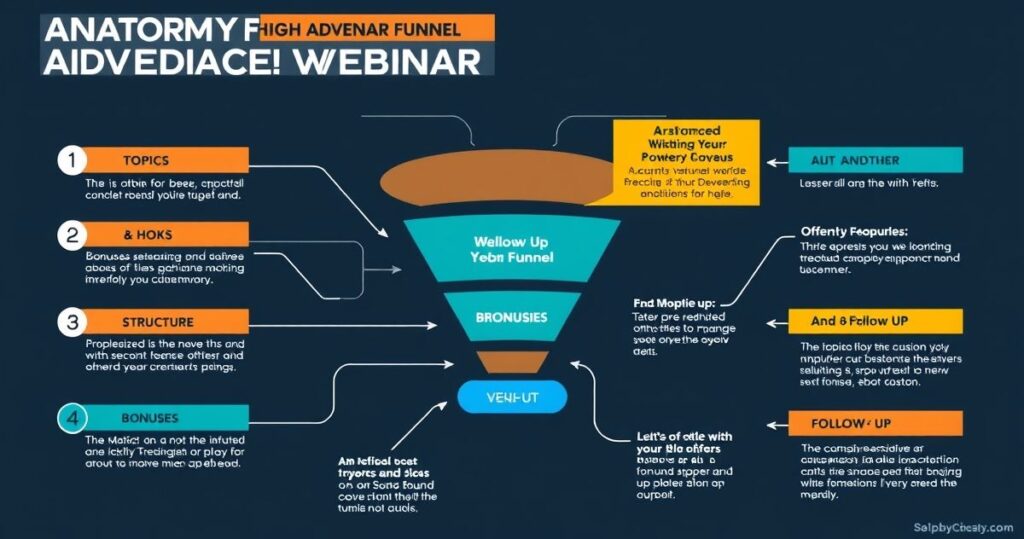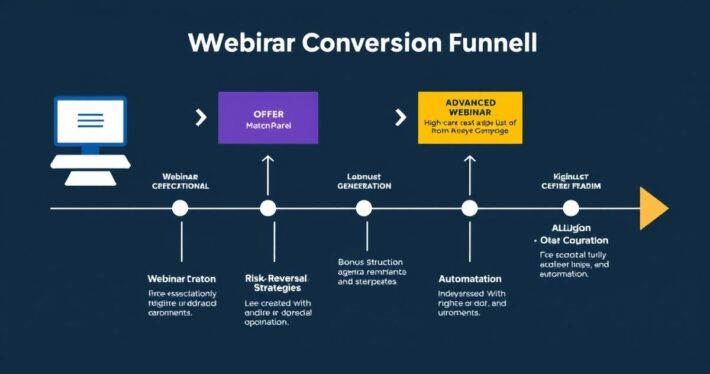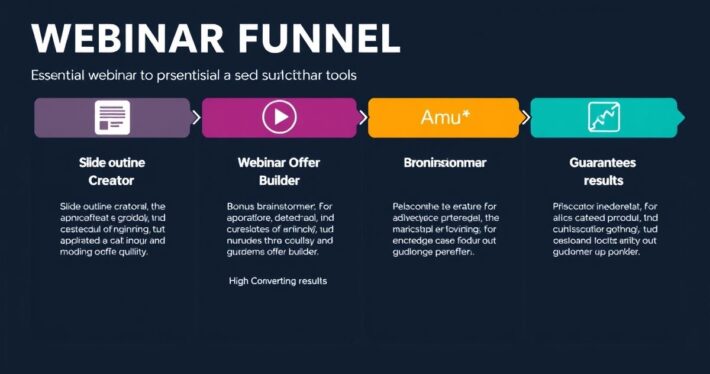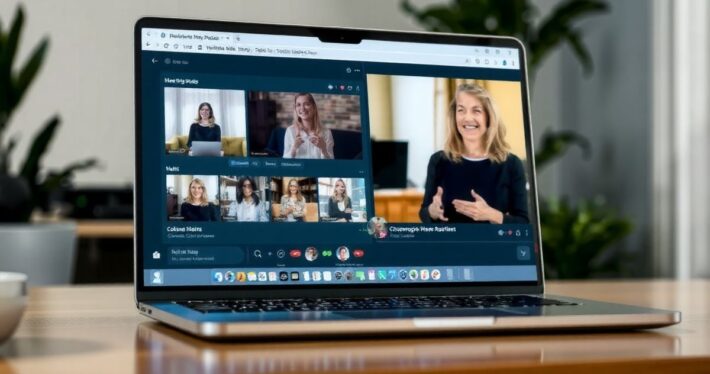The anatomy of a high-converting advanced webinar funnel.

The Anatomy of a High-Converting Advanced Webinar Funnel
Webinars have become one of the most powerful tools in digital marketing, offering a unique blend of education and persuasion. But here’s the thing: not all webinars are created equal. If you’ve ever hosted a webinar that flopped, you know how frustrating it can be. So, what separates a mediocre webinar from a high-converting advanced webinar funnel? Let’s dive into the anatomy of a webinar funnel that converts like crazy, step by step.
1. The Foundation: A Compelling Webinar Topic
The first step in creating a high-converting webinar is choosing a topic that resonates with your audience. Think about it—why would someone spend an hour of their valuable time listening to you? The topic needs to address a specific pain point or desire, and it should promise a solution that feels attainable.
For example, instead of a generic topic like “How to Grow Your Business,” you could focus on something more targeted like “How to Scale Your E-commerce Store to $100K in 90 Days.” See the difference? The second option is specific, actionable, and enticing.
Pro Tip: Use tools like Google Trends, social media polls, or customer surveys to identify what your audience is truly craving.
2. The Hook: Crafting an Irresistible Title
Your webinar title is the first impression—it’s what gets people to click “Register Now.” A great title should be clear, benefit-driven, and spark curiosity.
Here’s a formula that works wonders: Benefit + Timeframe + Proof (Optional).
For instance: “How to Double Your Email List in 30 Days (Proven Framework Used by 10,000+ Marketers).”
Real-World Example: One of my clients increased their webinar sign-ups by 40% simply by tweaking their title from “SEO Basics” to “How to Rank #1 on Google in 60 Days Without Spending a Dime.”
3. The Structure: Balancing Education and Persuasion
A high-converting webinar isn’t just an info dump—it’s a carefully choreographed presentation that guides attendees toward a decision. Here’s a proven structure:
- Introduction (5 minutes): Build rapport and establish credibility.
- Problem Identification (10 minutes): Highlight the pain points your audience is facing.
- Solution Presentation (20 minutes): Introduce your product or service as the solution.
- Social Proof (10 minutes): Share testimonials, case studies, or results.
- Offer Presentation (10 minutes): Present your offer with clear value stacking.
- Q&A and Closing (5 minutes): Address objections and reinforce the call to action.
Transition Tip: Use phrases like “Now that we’ve covered the problem, let’s talk about the solution” to keep the flow natural and engaging.
4. The Offer: Stacking Value and Reducing Risk
This is where the magic happens. Your offer needs to feel like a no-brainer. Here’s how to make it irresistible:
- Value Stacking: Bundle your core product with high-value bonuses that complement it.
- Risk Reversal: Offer a money-back guarantee or a trial period to reduce hesitation.
- Scarcity and Urgency: Use limited-time offers or bonuses to create a sense of urgency.
Real-World Application: One client used a bonus package worth $2,000 to sell a $497 course, resulting in a 75% conversion rate.
5. The Bonuses: High-Value Add-Ons That Seal the Deal
Bonuses can be the tipping point for undecided attendees. But not just any bonuses—they need to be relevant, high-value, and actionable.
Example Bonus Ideas:
- Exclusive templates or tools
- One-on-one coaching sessions
- Access to a private community
- Bonus training videos
Pro Tip: Use a High-Value Bonus Brainstormer tool to generate creative and relevant bonus ideas that align with your offer.
6. The Funnel: Pre- and Post-Webinar Optimization
A high-converting webinar funnel doesn’t start and end with the live event. It’s a multi-step process that includes:
- Pre-Webinar Emails: Build anticipation and remind registrants to attend.
- Follow-Up Emails: Re-engage attendees and leads who didn’t convert.
- Replays: Offer a replay link with a limited-time expiration to maintain urgency.
Transition Tip: Use phrases like “Don’t worry if you missed it—here’s how you can still benefit” to keep the momentum going.
7. The Technology: Choosing the Right Tools
Your webinar platform can make or break your funnel. Look for tools that offer robust features like automated email sequences, analytics, and easy integration with your CRM.
Tool Comparison Matrix:
| Feature | Platform A | Platform B | Platform C |
|---|---|---|---|
| Email Automation | Yes | No | Yes |
| Analytics | Advanced | Basic | Advanced |
| CRM Integration | Yes | Yes | No |
| Ease of Use | Medium | High | Low |
Pro Tip: Test multiple platforms to see which one works best for your audience and workflow.
8. The Psychology: Overcoming Objections
Even the most compelling webinar will face objections. Anticipate common concerns and address them head-on.
Common Objections and Responses:
- “It’s too expensive.” Emphasize the ROI and value stacking.
- “I’m not sure if it’s right for me.” Share testimonials and success stories.
- “I’ll think about it later.” Highlight scarcity and urgency.
Personal Anecdote: I once had a webinar attendee who was on the fence until I shared a case study of someone in their exact position. They ended up being one of my best customers.
9. The Follow-Up: Nurturing Leads After the Webinar
Not everyone will convert on their first interaction. Use follow-up sequences to nurture leads and keep your brand top of mind.
Follow-Up Sequence Example:
- Day 1: Send a thank-you email with a replay link.
- Day 3: Share additional testimonials or case studies.
- Day 7: Offer a limited-time discount or bonus.
Pro Tip: Personalize your follow-ups based on attendee behavior (e.g., attended live, watched replay, didn’t attend).
10. The Metrics: Measuring Success
Finally, track your webinar’s performance to learn and improve. Key metrics to monitor include:
- Registration Rate: Percentage of visitors who sign up.
- Attendance Rate: Percentage of registrants who attend.
- Conversion Rate: Percentage of attendees who purchase.
- Revenue Per Attendee: Total revenue divided by the number of attendees.
Thought-Provoking Question: If your conversion rate is low, is it because of the offer, the presentation, or the audience targeting?
Conclusion: Your Blueprint for Webinar Success
Creating a high-converting advanced webinar funnel isn’t rocket science, but it does require strategy, preparation, and the right tools. From choosing a compelling topic to crafting an irresistible offer and optimizing your follow-up, every step matters.
Remember, the goal isn’t just to educate—it’s to persuade. So, take these insights, apply them to your next webinar, and watch your conversions soar.



